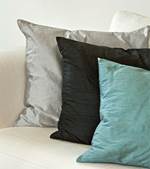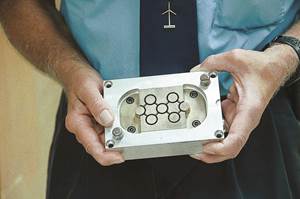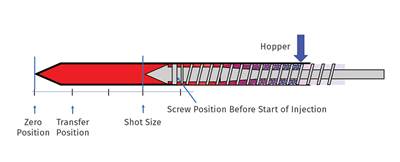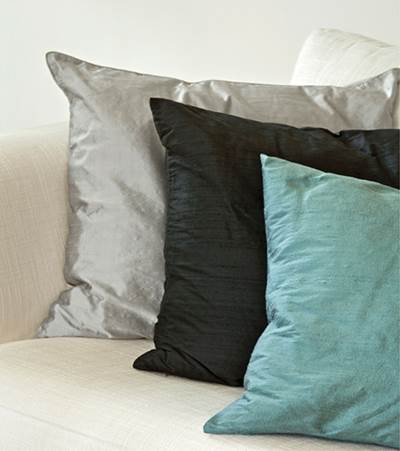To Cushion or Not To Cushion: That Is the Question
Whether or not your process setup includes adding cushion depends on multiple factors, including the part being molded. Learn when and how to effectively apply cushion in your process.

Whether you leave some melted resin in front of the screw as a “cushion” in your process or allow the screw to bottom out depends on several variables. Source: Plastics Technology
A few months ago, one of my team members mentioned that a visitor to our facility made some comments regarding some of our processes, including the lack of cushions on several machines and how that needed to be resolved right away. It was even posited that molding without cushion is not scientific injection molding. Over the years, I have purposely avoided applying the term “scientific molding” just because of its overuse. In my opinion, that overapplication has belittled what people like John Bozzelli, Rod Groleau and John Beaumont have done for our industry. It seems that people try and use this term to add weight to their opinions, thereby masking those personal opinions in a veil of “scientific molding” in order to make them seem like facts. Trying to, let’s say, win an argument by adding this term to dismiss opinions that oppose or are contradictory to their own. This is not science. Science is using data to establish facts and without data, you’re just a person with an opinion.
Wither the Viscosity Curve
Injection molding is a science and ultimately what we refer to as scientific molding is a systematic approach to defining and maintaining our processes. This approach is always evolving and changing as our understanding of the injection molding process increases. It wasn’t that long ago that viscosity curves to establish fill times were considered the gold standard in process development protocols, but now most training programs don’t even include this study as part of their coursework.
Part of being a scientific molder is being open to different ideas and evolving along with the science of injection molding.
Before the case study published by Beaumont on viscosity curves, it was the first step in defining fill time for a process. It was the first step in the protocols that I developed as well and something I’ve written about previously. This is a great example of how data should be used to establish facts, and how important the scientific method is in establishing those facts. Part of being a scientific molder is being open to different ideas and evolving along with the science of injection molding.
So, is running with a cushion exclusively “scientific molding” or could running without a cushion also be considered “scientific molding”? The answer to both these questions is the same — yes — but neither of these alone can define whether you have a robust process.
Cushion Defined
The cushion is simply the amount of plastic remaining in front of the screw during the injection stage of the injection molding process. It is an output which many settings can influence. Machine manufacturers do not all measure cushion the same and some don’t even use the term “cushion.” These machine manufacturers might instead use “screw end position,” “screw forward position” and more. Some machine manufacturers provide the cushion at the end of the pack-and-hold stage, while some use the screw’s most forward position, which could be at the end-of-fill stage. These can differ based on how much the screw drifts back between the fill and the hold stages of injection. If a molder is filling at high pressures when the machine switches to a lower pressure for the hold stage, the screw can and will drift back depending on how much pressure is in the mold. Some machine manufacturers will provide both the screw’s most forward position and the cushion at the end-of-hold time, which is what I prefer.
The cushion is what essentially enables us to build the desired cavity pressure during our injection process.
The cushion is what essentially enables us to build the desired cavity pressure during our injection process. The amount of plastic left in front of the screw enables us to continue to pressurize the mold, using the cushion as a bridge to connect the screw to the mold’s flow channels and cavity-forming steel. If we are running without a cushion, the screw bottoms out and plastic or pressure can no longer be transferred into the mold. Once the screw has hit bottom, the hold pressure can no longer influence the part characteristics. So, is it better or more “scientific” to run with or without a cushion? Better yet, is it more robust and repeatable to set up a process with a cushion? The answer lies within the part itself.
Running a process with a cushion results in a part with a higher level of stress, and this stress can result in unwanted part characteristics. Stress can increase shrink outside of the cavity-forming steel. Without the cavity-forming steel to act as a shrink fixture, this increased shrink can cause the part to warp due to uneven shrink rates throughout the part. This is a significant issue for molders producing thin-walled parts, due to the need for fast fill times resulting in high pressures, which can cause thin-wall parts to warp. To reduce the impact of cavity pressure causing warp, processes are developed with no cushion, which significantly reduces the molded-in stress.
In fact, plunger-style machines that are designed to bottom out each shot are perfect for this application and are the primary machine used in our facility. These machines come with two barrels stacked on one another, the top barrel extrudes the plastic into the shot pot of the bottom barrel and a plunger injects the molten material into the mold at high rate of speed. The plunger has a mechanical stop that it hits, bottoming out each and every shot — a machine designed for a cushionless process.
Outdoor trash bins are another example of how a cushion can cause unwanted material stress resulting in part quality issues. For years now, manufacturers of large outdoor trash bins have been running without cushions to reduce cavity pressure and stress in parts. When first brought to market, plastic trash bins were notorious for cracking as the weather would change. This was due to the molded-in stress eventually causing the parts to become extremely brittle over time. Over the years, many of these molders have developed processes that run with no cushion which, as stated before, will reduce the amount of molded-in stress. This doesn’t mean that running without a cushion is a more robust process — again it is the part’s form, fit and function that should dictate this. I will add that it is preferred to run without a cushion on a machine designed for it. Bottoming out a traditional reciprocating screw can cause excessive wear to your screw tip and barrel end cap. This can easily be remedied by using a screw tip designed for bottoming out.
As I have stated, the part should determine whether a cushion is required. A cushion can be a critical part of a process developed to run parts with extremely tight dimensional requirements. The automotive and medical molding industries are a good example of this where CpK and PpK are part of the customer requirements.
Is it more robust and repeatable to set up a process with a cushion? The answer lies within the part itself.
A molder can still hold tight tolerances without a cushion but not typically to the level required in these industries. When developing a process with a cushion, it is important to remember that this is a linear characteristic. Meaning that if your machine is set with volumetric units of measure, it is very difficult to determine if the cushion is sufficient enough for your process. Can it be done? Well sure, but why make something harder on your technicians? It is much simpler and efficient to simply read a number off a screen than to calculate the cushion based off a volumetric output and the barrel’s inner diameter. There is no standard for how large a cushion should be, and experiments can be run to determine the cushion size based on part dimensional stability. Once you have identified your optimal cushion size, it is critical to ensure you identify the normal variation and monitor it to continue to run within your control limits.
It is important to remember that our goal is to run parts that meet our customer’s specifications within our internally set standards. We use standardized processing tools to develop and maintain these processes, and that is a scientific method of injection molding. It doesn’t mean that a process that differs from the one you are using isn’t scientific. It also doesn’t mean that the process you’re using today won’t change in the future, as our understanding of the science of injection molding changes. Let’s keep an open mind and let the data lead us to the process that provides the most robust, repeatable part we can make. Be safe and remember — you are your organization’s most important resource.
About the author: Robert Gattshall has more than 28 years of experience in the injection molding industry and holds multiple certifications in Scientific Injection Molding and the tools of Lean Six Sigma. Gattshall has developed several “Best in Class” Poka Yoke systems with third-party production and process monitoring such as Intouch Monitoring Ltd. and RJG Inc. He has held multiple management and engineering positions throughout the industry in automotive, medical, electrical and packaging production. Gattshall is also a member of the Plastics Industry Association’s Public Policy Committee. In January 2018, he joined IPL Plastics as process engineering manager. Contact: 262-909-5648; rgattshall@gmail.com.
Related Content
How to Select the Right Tool Steel for Mold Cavities
With cavity steel or alloy selection there are many variables that can dictate the best option.
Read MoreWhy Shoulder Bolts Are Too Important to Ignore (Part 1)
These humble but essential fasteners used in injection molds are known by various names and used for a number of purposes.
Read MoreKnow Your Options in Injection Machine Nozzles
Improvements in nozzle design in recent years overcome some of the limitations of previous filter, mixing, and shut-off nozzles.
Read MoreBack to Basics on Mold Venting (Part 2: Shape, Dimensions, Details)
Here’s how to get the most out of your stationary mold vents.
Read MoreRead Next
Consider the Cushion When Seeking Shot-to-Shot Consistency
Creating and maintaining a consistent cushion is a key step in achieving shot-to-shot consistency. Learn what cushion is and how it affects part quality.
Read More



















